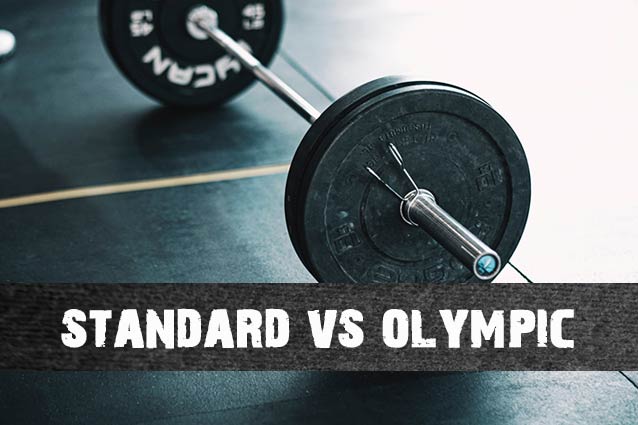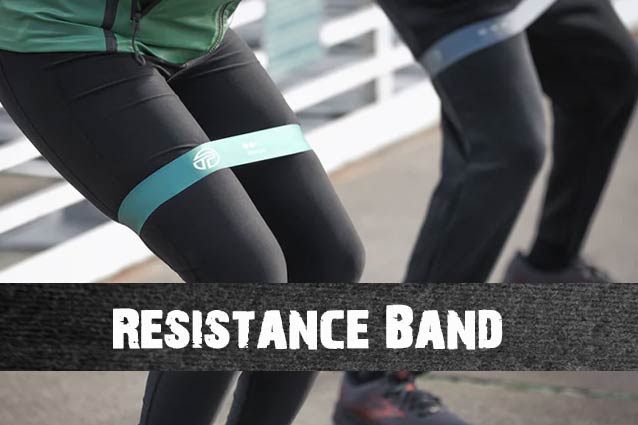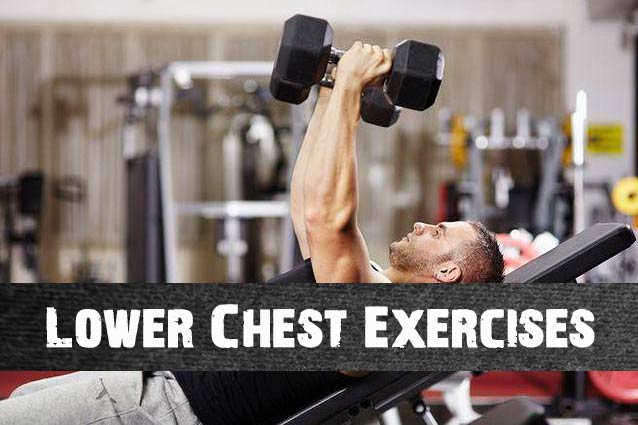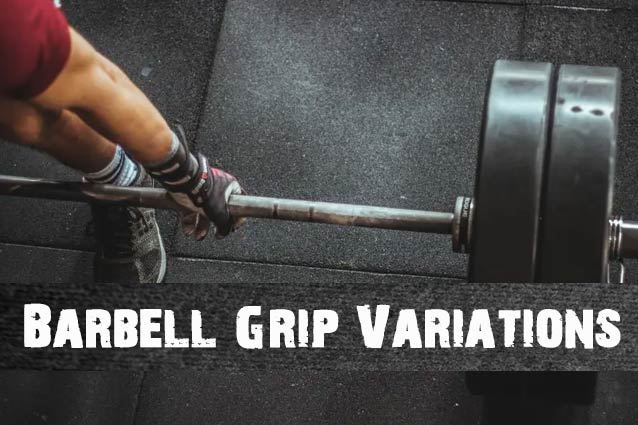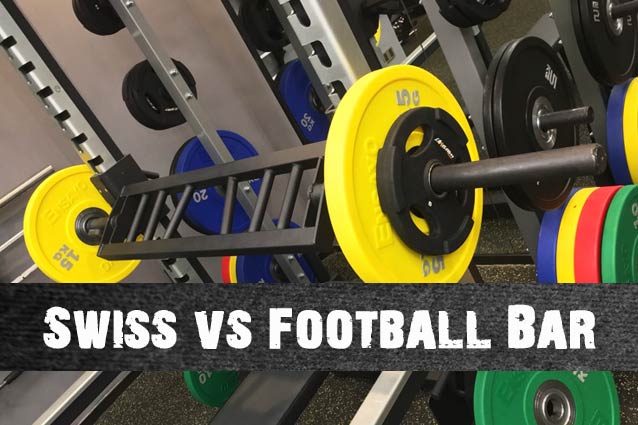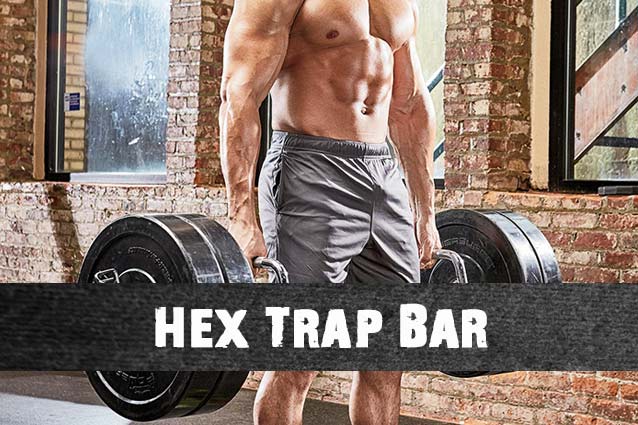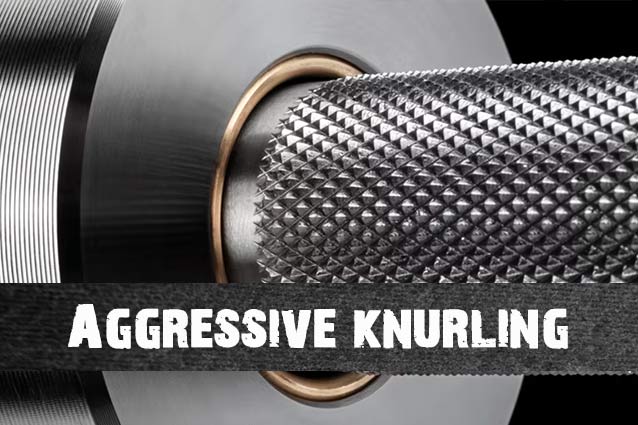Are you in the market for a new barbell for your home gym or do you want to replace your current one? You might be curious about the differences between standard and Olympic barbells.
Although they may appear similar, they actually have some distinct features that make them better suited for different types of exercises and objectives.
In this article, we’ll review the similarities and differences between these two types of barbells and assist you in determining which one will work best for your needs. So, get your chalk ready, wrap your wrists, and let’s delve into it!
Standard barbells
Standard barbells are a common type of barbell that you can find in most gyms and home fitness equipment. They are usually lighter and shorter than Olympic barbells, and have a one-inch diameter that works with standard weight plates.
Standard barbells can range from 15 pounds to 45 pounds, depending on the length and material. They have a fixed shaft and sleeves, which means they don’t rotate independently.
They also have a mild knurling on the shaft, which is the rough texture that helps you grip the bar.
weight capacity
Generally, standard barbells can handle between 200 pounds to 350 pounds, which is much lower than Olympic barbells that can handle up to 1500 pounds.
If you are lifting heavier weights, you might want to consider using an Olympic barbell instead of a standard one.
However, if you are just starting out or doing lighter exercises, a standard barbell might be enough for your needs.
Bar whip
Bar whip is a term that refers to how much a barbell bends or flexes when you lift it. The more whip a barbell has, the more the weight on the ends will move when you lift or drop the bar.
Bar whip can be useful for some exercises, such as Olympic lifts, where you want to use the momentum of the weight to help you lift it. However, bar whip can also be detrimental for other exercises, such as powerlifting or bench press, where you want more stability and control over the weight.
Standard barbells usually have less whip than Olympic barbells because they are shorter and thicker. However, some standard barbells may have more whip than others depending on their material and quality.
If you want a standard barbell with less whip, look for one that has a higher tensile strength rating, which measures how much force it can withstand before breaking. Higher tensile strength means a stiffer and stronger barbell.
Knurling
Standard barbells usually have a mild knurling that is not too aggressive or sharp. Standard barbells may also have fewer sections of knurling than Olympic barbells.
For example, some standard barbells may not have a center knurling that helps with back squats. Standard barbells may also have only one or no knurl rings that mark where to place your hands for different lifts.
If you want a standard barbell with more knurling options, look for one that has center knurling and dual knurl rings.
In general, Olympic-style bars tend to have more aggressive knurling than powerlifting-style bars, as Olympic lifting requires a more secure grip during explosive movements like snatches and clean and jerks.
Sleeve diameter
The sleeve diameter of a barbell is the thickness of the ends of the barbell where you load the weight plates. The sleeve diameter affects how much weight you can load on your barbell and what kind of collars you need to secure them.
Standard barbells usually have a sleeve diameter of 1 inch (25.4 mm), which is smaller than Olympic barbells that have a sleeve diameter of 1.96 inches (50 mm). Standard barbells are sometimes also referred to as “1-inch barbells” because of their sleeve diameter.
Standard barbells also have non-rotating sleeves that do not spin when you lift them, unlike Olympic barbells that have rotating sleeves that reduce friction and torque.
If you want a standard barbell with a larger sleeve diameter, you may need to look for specialty bars that are designed for specific purposes, such as powerlifting or strongman training.
Read More: Awesome Benefits of the Swiss Bar and Football Bar
Olympic barbells
Olympic barbells are a type of barbell that is used for weightlifting and powerlifting competitions. Olympic barbells have a standard length of 2.2 meters (7.2 feet), a standard weight of 20 kilograms (44 pounds) for men’s competitions, and 15 kilograms (33 pounds) for women’s competitions, and a standard sleeve diameter of 50 millimeters (1.96 inches).
Olympic barbells also have rotating sleeves that spin when you lift them, reducing friction and torque.
In addition to Olympic weightlifting and powerlifting competitions, Olympic barbells are commonly used in gyms for strength training exercises such as squats, deadlifts, and bench presses.
weight capacity
The weight capacity of Olympic barbells can vary depending on the manufacturer and the specific model of the barbell. In general, most Olympic barbells have a weight capacity of at least 500 pounds (227 kg) or more.
However, some Olympic barbells have higher weight capacities that can range from 700 pounds (318 kilograms) to 1,500 pounds (680 kilograms), which are suitable for more advanced or competitive lifters.
It’s important to note that the weight capacity of an Olympic barbell is not the only factor to consider when selecting a barbell for your workout. Other factors such as the barbell’s diameter, length, and grip pattern can also have an impact on its suitability for different exercises and lifting styles.
You should also avoid dropping your barbell or loading it with more weight than it can handle, as this can damage your bar and reduce its lifespan.
Bar whip
In general, Olympic weightlifting bars are designed to have some degree of bar whip, as they can help to transfer power from the lifter’s body to the bar and ultimately to the weights being lifted.
Olympic barbells have more bar whip than powerlifting or general-purpose barbells because they are designed for dynamic lifts that require speed and agility.
Bar whip can help lifters perform explosive movements like snatches and clean and jerks by preserving their momentum and reducing their energy expenditure.
The amount of bar whip depends on factors like the material, diameter, tensile strength, and coating of the bar. Generally, a thinner, softer, and more elastic bar will have more whip than a thicker, harder, and stiffer bar.
If you want to know how much bar whip your Olympic barbell has, you can check the manufacturer’s specifications or contact them directly. You can also test it yourself by loading it with heavy weights and observing how much it bends when you lift it off the rack or floor.
Knurling
The knurling pattern for Olympic barbells is usually a diamond-shaped pattern created by multiple sets of diagonal lines that go in opposite directions. The most common type of knurling pattern is mountain based on the shape, elevation, and density of the diamonds.
Olympic barbells have more aggressive knurling than powerlifting or general-purpose barbells because they are designed for fast and explosive lifts that require a secure grip.
Olympic barbells also have dual knurl marks that indicate where to place your hands for snatch and clean and jerk movements.
You can also test the bar knurling yourself by feeling it with your hands and seeing how comfortable it is for you.
You should also clean your Olympic barbell regularly to remove any dirt or rust that can affect its knurling quality.
Sleeve diameter
The sleeve diameter of Olympic barbells is 2 inches (50.8mm). This is the standard size for Olympic weight plates and allows for easy loading and unloading of weights onto the bar.
You cannot use standard weight plates that have a 25 mm or 1-inch hole on an Olympic barbell.
The sleeve diameter of your barbell affects what type of plates you can use and how much weight you can load on it. You should always check the specifications of your barbell and your plates before buying them to make sure they are compatible with each other.
Standard Barbells vs Olympic Barbells
You’ve learned a lot about Standard barbells and Olympic barbells by now. They both have their pros and cons, but they’re also quite different from each other. Feeling confused? No need to stress, we’ve got you covered.
We’ve got you covered with a handy dandy comparison table that will lay out all the dissimilarities for you in a snap. Trust me, it’s going to make your decision-making process a whole lot smoother!
| Factors | Standard barbells | Olympic barbells |
|---|---|---|
| Length and weight | Standard bars are usually between 5 to 6 feet long and weigh between 15 to 25 pounds. | Olympic barbells tend to be longer and heavier than standard barbells. Men’s Olympic bars are 2200 mm or about 7 feet long and weigh 20 kg or about 44 pounds. Women’s Olympic bars are 2010 mm or about 6 feet long and weigh 15 kg or about 33 pounds1. |
| Weight capacity | Standard barbells usually max out at 250 pounds. | Olympic barbells can hold much more weight than standard barbells. Many Olympic barbells can hold around 1,500 pounds. |
| Shaft diameter | Standard barbells have shafts that are 25 mm or 1 inch thick all along their length. | Olympic barbells have shafts that vary in diameter depending on the type of lifting they are designed for. Men’s Olympic bars have a shaft diameter of 28 mm, while women’s Olympic bars have a shaft diameter of 25 mm. |
| Sleeve diameter | Standard barbells have sleeves that are 25 mm or 1 inch in diameter. | Olympic barbells have sleeves that are 50 mm or 2 inches in diameter. |
| Collars | Standard barbells have fixed collars that are attached to the sleeves. | Olympic barbells have rotating collars that allow the sleeves to spin independently from the shaft. |
| Bar whip | Standard barbells tend to have less whip than Olympic barbells. Because they are made with stiffer materials and have a lower weight capacity. | Olympic barbells are designed to have more whip because they are used for explosive lifts that require speed and power. |
| Knurling | Standard bars usually have a uniform knurling pattern along their length. | Olympic barbells have different knurling patterns depending on the type of lifting they are designed for. They are usually more aggressive. |
| Exercises | Standard barbells may be more suitable for exercises that require a more stable bar, such as the bench press. | Olympic barbells may be better for exercises that require more flexibility and whip, such as the snatch and clean and jerk. |
| Cost | Standard barbells usually have a smaller diameter and less weight capacity, making them less expensive than Olympic barbells. | Olympic Barbells are more expensive because they are made of higher-quality steel and can hold more weight. |
Who should use standard barbells?
Standard barbells are more suitable for people who:
- Are beginners or intermediate lifters who do not need to lift very heavy weights or perform complex lifts that require a lot of whip or rotation.
- Have limited space or budget and want a cheaper and shorter barbell that can fit in their home gym or garage.
- Do not have a specific specialty or goal in lifting and want a versatile barbell that can be used for various exercises and muscle groups.
Who should use Olympic barbells?
- Are advanced or competitive lifters who need to lift very heavy weights or perform complex lifts that require a lot of whip or rotation.
- Have enough space and budget and want a high-quality and durable barbell that can fit in standard racks and use 2-inch weight plates.
- Have a specific specialty or goal in lifting and want a specialized barbell that can optimize their performance in Olympic weightlifting, powerlifting, or CrossFit.
Final thoughts
In conclusion, choosing standard and Olympic barbells depends on your fitness goals, experience level, and budget.
If you are a beginner or casual lifter who is not looking to lift extremely heavy weights, a standard barbell can provide a good starting point for your strength training journey.
However, if you are serious about weightlifting and plan to lift heavier weights, you may eventually want to upgrade to an Olympic barbell for its larger size and higher weight capacity.
Whatever type of barbell you choose, remember to practice good form, use proper technique, and start with lighter weights before progressing to heavier ones.
Happy lifting!

